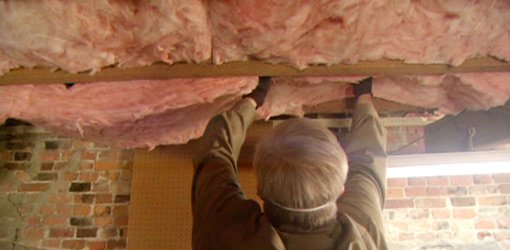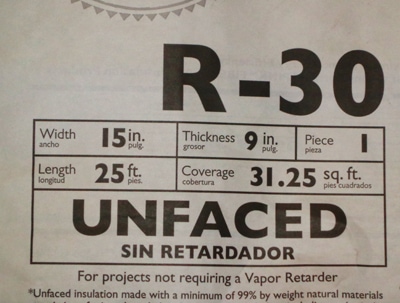If the attic doesn t have any existing insulation use faced insulation with the paper facing toward the heated living space.
Faced vs unfaced insulation attic in florida.
Unfaced insulation can greatly reduce the risk of mold mildew or moisture damage in your house.
For many contractors the decision to use one kind of insulation over the other depends solely on preference rather than a by the book decision making process.
For block walls interior insulation must meet or exceed r 7 8 and exterior insulation must be r 6.
Ceiling insulation must be much higher at r 30 and a raised floor must be at.
Unfaced batt insulation is often used for beefing up the r rating with the r rating being the insulation rating scale that says how much or how effective insulation needs to be in that space.
You should only use faced insulation as the first layer of insulation.
When adding more insulation to an attic that already has insulation use unfaced insulation.
Facing is a thin layer of paper or plastic attached to one side of batting insulation which is sold in a roll.
Framed wall insulation must meet or exceed r 13.
Kraft faced insulation should be installed in exterior walls exterior basement walls and attic ceilings by pressing the product into the wall cavity with the paper side facing outward towards the installer.
The same applies to faced unfaced and other kinds of insulation products.
Residential requirements for insulation are divided by the location in the home.
Find your zone on the map and then use the chart to determine the level of insulation you need to properly insulate your attic walls floors and crawlspaces.
It is stapled to studs and joists unlike unfaced batts.
Climate also dictates how the vapor barrier should be positioned.
Insulation requirements in florida.
The kraft paper on one side of faced insulation keeps moisture from spreading throughout the walls or ceiling.
Place a new layer of unfaced batts perpendicular to the old layer to cover any gaps in the lower layer.
Insulation being unfaced doesn t mean it s a bad choice.
It means ensuring that it s the right product for your space.
Unfaced means the insulation lacks a vapor retarder paper or plastic facing.
You can buy them unfaced or simply remove the paper or foil backing.
Faced insulation is used in exterior walls attics finished basements floors and ceilings.
To make things safe cover your unfaced insulation with drywall to prevent the risk of a fire.
Always use unfaced batts both when laying product for the first time and to prevent moisture from becoming trapped between new and old layers of insulation.
Whether you choose faced or unfaced insulation for the attic depends on the.
The insulation can also be used to fill cracks around doors and windows but you ll need to peel off the facing.




























